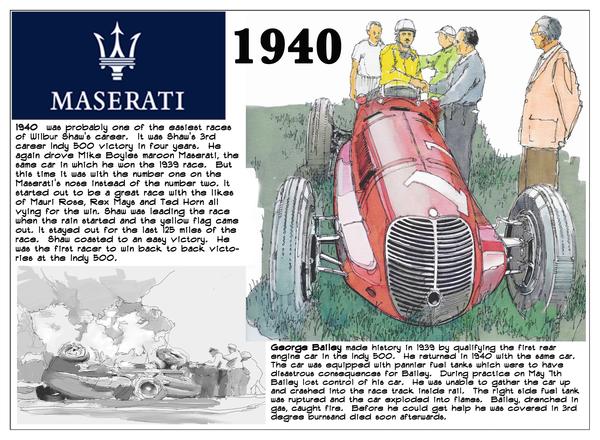- 1890s Cars
- Barney Oldfield Images
- Oldfield - Petersen
- Beer
- Early Auto Industry
- Uniontown - Marci McGuinness
- General Period Clip Art
- Early Race Related Clip Art
- Advertising and Editorial Cartoons
- Early Indianapolis
- IMS Construction
- Indianapolis Speedway
- First IMS Auto Races
- Failed 1909 Air Show
- 1909 IMS Balloon Races
- 1909 IMS Motorcycle Meet
- 1910 Indianapolis Auto Show
- 1913 Indianapolis 500
- 1919 Indianapolis 500
- Joe Dawson
- WWI "500" Winner Draft Cards
- Frank Di Buglione (off the wall art, LLC)
- Gilbert Art
- Carl Graham Fisher
- IMS Hall of Fame Museum
- Alco at 100th Anniversary
- Frederic Matile - Morris Park
- Miami-Fulford Speedway
- Paul Sheedy Collection
- Early Wyoming Racing - 1909 - 1919
- Personalities
- Early Racing Images
- Glidden Tour
- 1909 Cobe Trophy
- Fairmount Park & Belmont Estates
- Early Santa Monica
- Don Radbruch Collection
- Jeroen de Boer Collection 1910
- Jeroen de Boer Collection 1912
- Jeroen de Boer Collection 1913
- Jeroen de Boer Collection 1914
- Georges Boillot
- Story's Indianapolis 500 Cars
- Story's Sports Cars
- Story's Grand Prix Cars
- Old School
- Story's Brickyard Sketchbook
Wilbur Shaw's Third Indianapolis 500 Win
Photo Gallery Categories
Search
Featured Article
Image of The Week

This is David Story's rendering of 1940 Indianapolis 500 winner Wilbur Shaw in the Mike Boyle Maserati. Shaw was the historic race's first three-time champion, also winning the grueling contest in 1937 and 1939. Less well known is that Shaw not only won the "500" three times but also finished in the runner-up spot the same number of times ('33, '35, '38). Find a great story on the 1937 race elsewhere on First Super Speedway.
As for the Maserati, virtually no one connects the dots between the Vanderbilt Cup revivals of the 1936 - 1937 and Shaw's decision to urge Boyle to make the Maserati purchase. Those revivals were on Long Island's Roosevelt Raceway cinder-surface road course and it was there that Wilbur Shaw saw the European Grand Prix cars of the age and encouraged team owner Mike Boyle to purchase one. Tazio Nuvolari won for Alfa Romeo in '36, Bernd Rosemeyer for Auto Union in '37. The American garage-designed oval-track oriented "specials" with rudimentary gearboxes were hopelessly outclassed by the Euro-engineered factory entries. Shaw knew if he could get his hands on one, he could dominate at the Brickyard.
The following is the text of David's margin notes:
"1940 was probably one of the easiest races of Wilbur Shaw's career. It was Shaw's 3rd career Indianapolis 500 victory in four years. He again drove Mike Boyles maroon Maserati, the same car in which he won the 1939 race. But this time it was with the number one on the Maserati's nose instead of number two. It started out to be a great race with the likes of Mauri Rose, Rex Mays, and Ted Horn all vying for the win. Shaw was leading the race when the rain started and the yellow flag came out. It stayed out for the last 125 miles of the race. Shaw coasted to an easy victory. He was the first racer to win back-to-back victories at the Indianapolis 500.
George Bailey made history in 1939 by qualifying the first rear engine car in the Indy 500. He returned in 1940 with the same car. The car was equipped with pannier fuel tanks which were to have disastrous consequences for Bailey. During practice on May 7th Bailey lost control of his car. He was unable to gather the car up and crashed into the race track inside rail. The right side fuel tank was ruptured and the car exploded into flames. Bailey, drenched in gas, caught fire. Before he could get help he was covered in 3rd-degree burns and died soon afterward."
| Attachment | Size |
|---|---|
| 1940 Indy 500.jpg | 2.59 MB |
